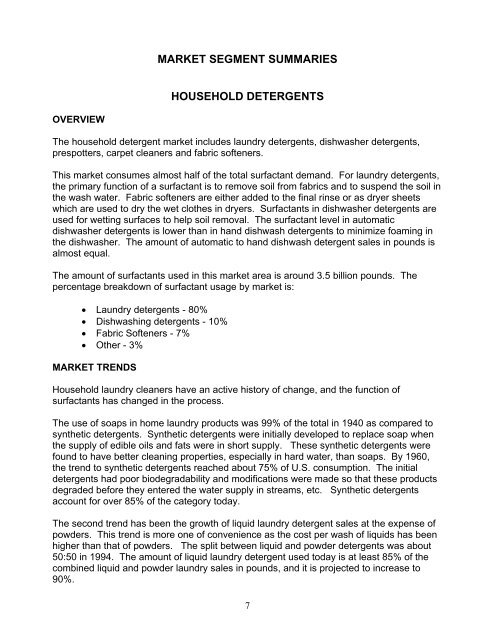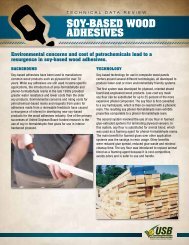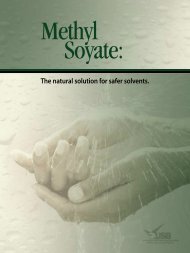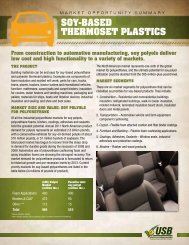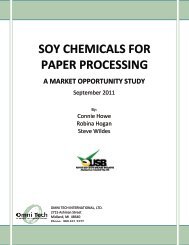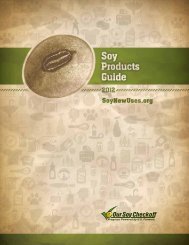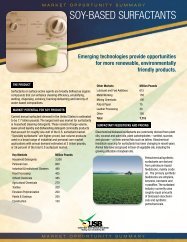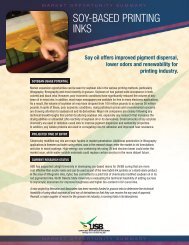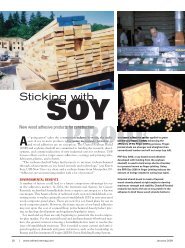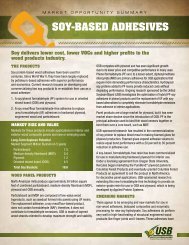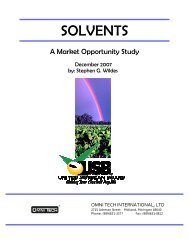Surfactants Market Opportunity Study - January 2009 - Soy New Uses
Surfactants Market Opportunity Study - January 2009 - Soy New Uses
Surfactants Market Opportunity Study - January 2009 - Soy New Uses
You also want an ePaper? Increase the reach of your titles
YUMPU automatically turns print PDFs into web optimized ePapers that Google loves.
MARKET SEGMENT SUMMARIES<br />
HOUSEHOLD DETERGENTS<br />
OVERVIEW<br />
The household detergent market includes laundry detergents, dishwasher detergents,<br />
prespotters, carpet cleaners and fabric softeners.<br />
This market consumes almost half of the total surfactant demand. For laundry detergents,<br />
the primary function of a surfactant is to remove soil from fabrics and to suspend the soil in<br />
the wash water. Fabric softeners are either added to the final rinse or as dryer sheets<br />
which are used to dry the wet clothes in dryers. <strong>Surfactants</strong> in dishwasher detergents are<br />
used for wetting surfaces to help soil removal. The surfactant level in automatic<br />
dishwasher detergents is lower than in hand dishwash detergents to minimize foaming in<br />
the dishwasher. The amount of automatic to hand dishwash detergent sales in pounds is<br />
almost equal.<br />
The amount of surfactants used in this market area is around 3.5 billion pounds. The<br />
percentage breakdown of surfactant usage by market is:<br />
• Laundry detergents - 80%<br />
• Dishwashing detergents - 10%<br />
• Fabric Softeners - 7%<br />
• Other - 3%<br />
MARKET TRENDS<br />
Household laundry cleaners have an active history of change, and the function of<br />
surfactants has changed in the process.<br />
The use of soaps in home laundry products was 99% of the total in 1940 as compared to<br />
synthetic detergents. Synthetic detergents were initially developed to replace soap when<br />
the supply of edible oils and fats were in short supply. These synthetic detergents were<br />
found to have better cleaning properties, especially in hard water, than soaps. By 1960,<br />
the trend to synthetic detergents reached about 75% of U.S. consumption. The initial<br />
detergents had poor biodegradability and modifications were made so that these products<br />
degraded before they entered the water supply in streams, etc. Synthetic detergents<br />
account for over 85% of the category today.<br />
The second trend has been the growth of liquid laundry detergent sales at the expense of<br />
powders. This trend is more one of convenience as the cost per wash of liquids has been<br />
higher than that of powders. The split between liquid and powder detergents was about<br />
50:50 in 1994. The amount of liquid laundry detergent used today is at least 85% of the<br />
combined liquid and powder laundry sales in pounds, and it is projected to increase to<br />
90%.<br />
7


